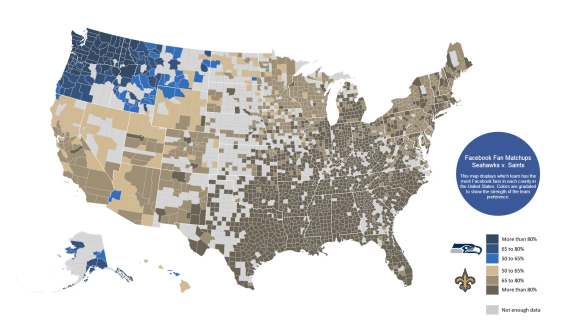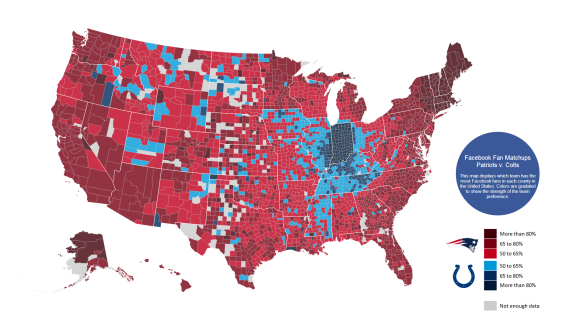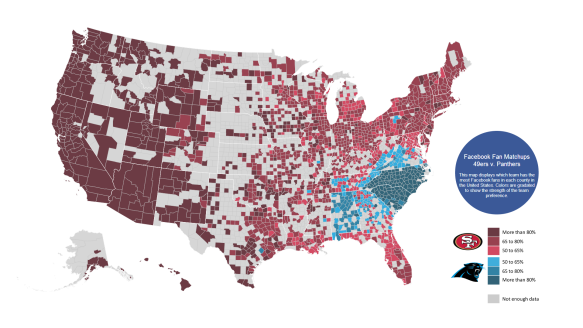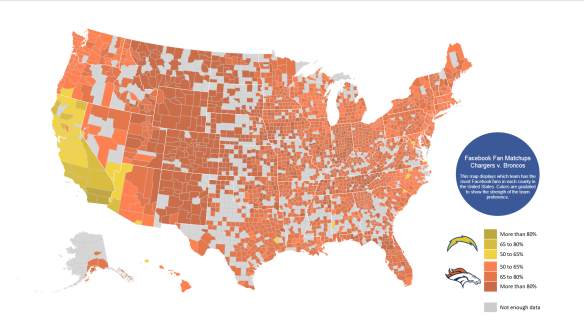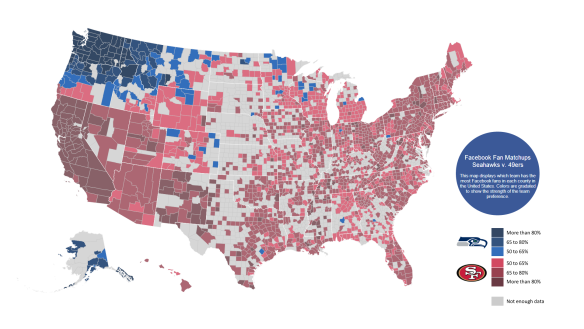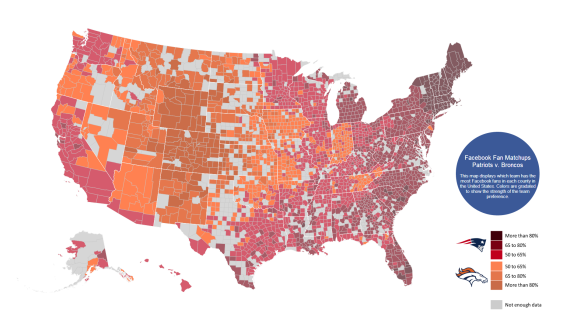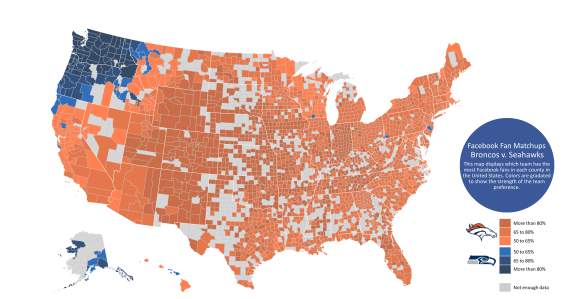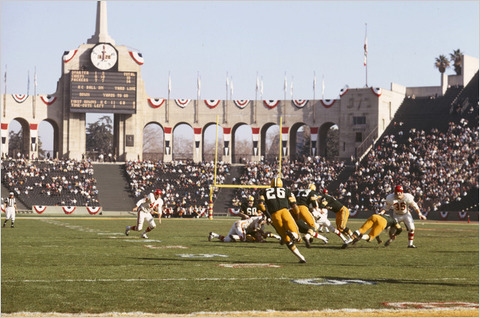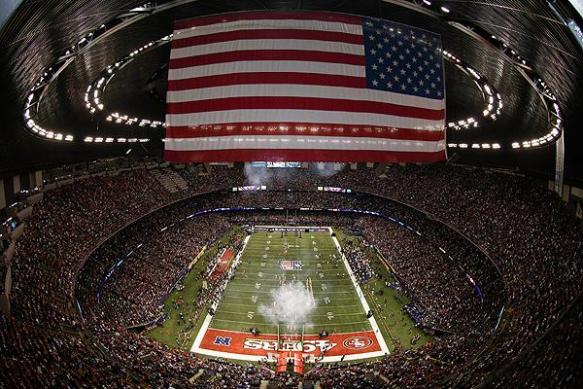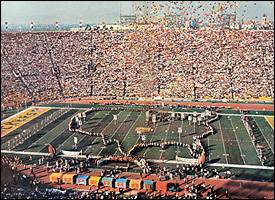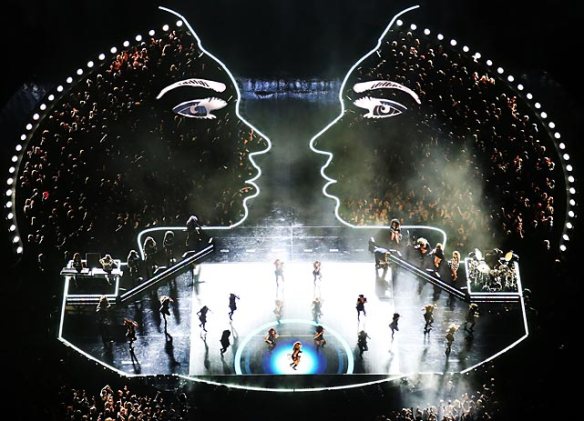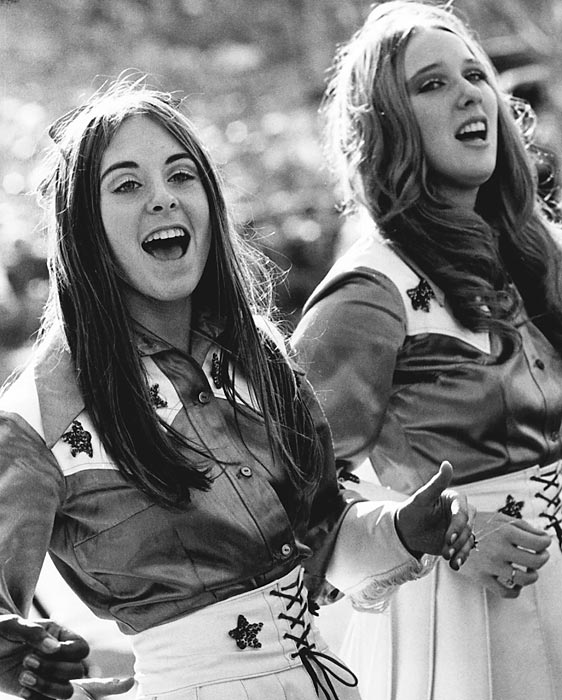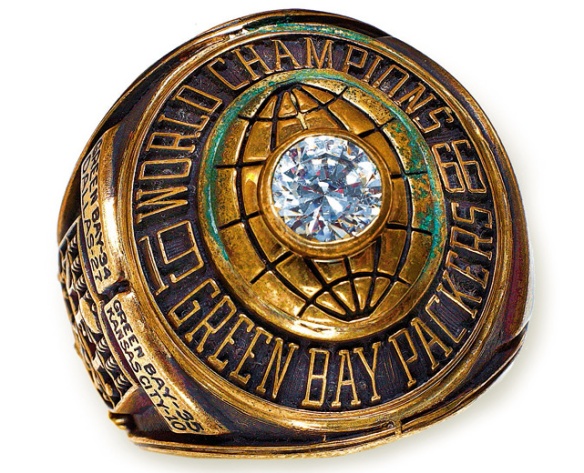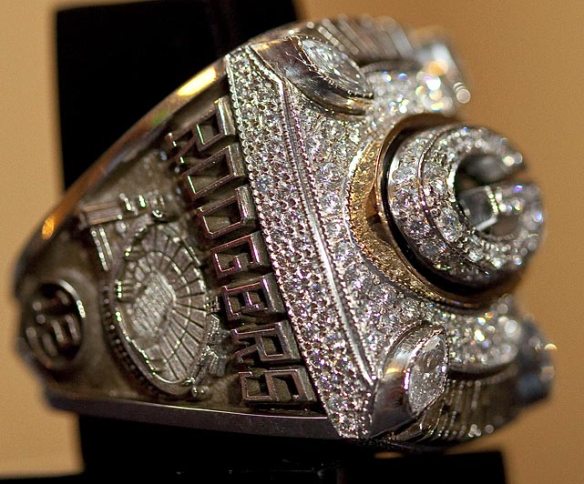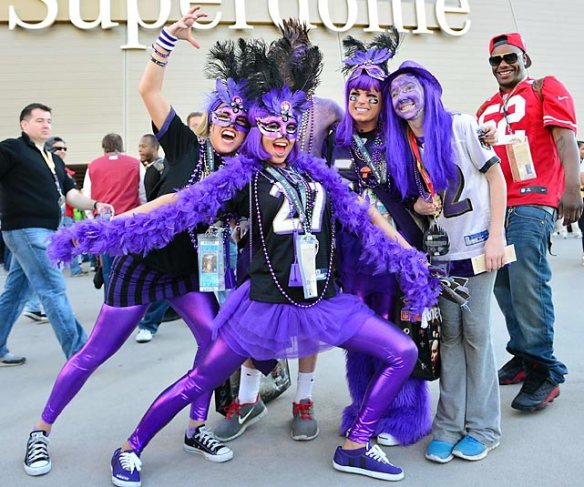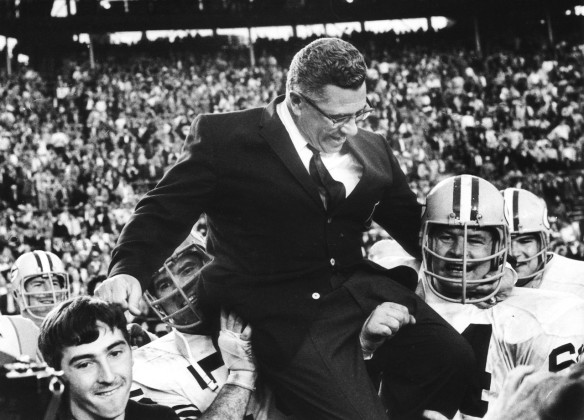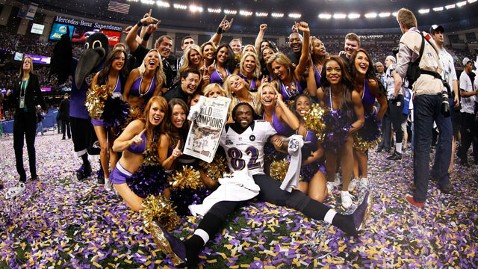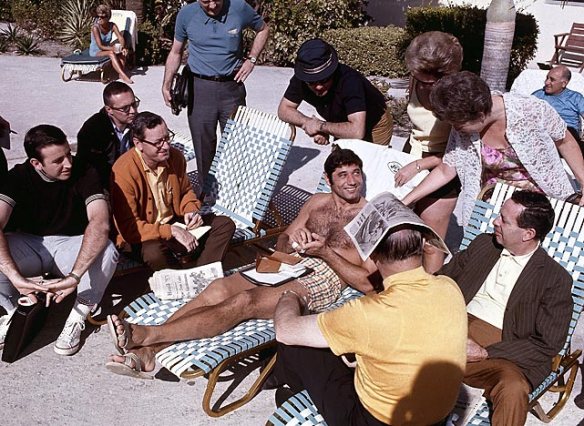Let’s go off topic, and talk sports! In case it wasn’t extremely obvious, we’re big football fans around these parts. Being based in the New York area, location of NFL Headquarters, and within 200 miles of 6 different NFL teams’ stadiums, we’re right in the middle of the action every season. The only way we could be in a more football-centric location would be if we opened a showroom inside the Football Hall of Fame in Canton, Ohio! And, of course, as we have made no secret, we’ve made suits for many current and previous NFL players and personalities, and we have pals at every level of American Football.

We’re kind of a big deal. People know us.
So, yes, we watch a lot of football, and we get invested in the insanely complicated rules, the crazy draft and trade processes, injury reports, logo designs, Super Bowl host city debates, all of it. But the one subject that has always fascinated us, and has inspired some moments of truly intense passion/hate, is the relocation of teams, and the expansion of the NFL through new teams.
The NFL is, without a doubt, one of the stablest sports leagues in history. That might have something to do with all of those “record profits” we keep hearing about. The NFL hasn’t contracted, that is to say, shuttered a team, since 1952. The other three major sports leagues in North America have all come close in the interim, and none of them expanded at anywhere near the speed, or with the success, that the NFL did. This stability extends to relocation, too. When a team moves to a new city, it’s almost always an extremely acrimonious affair that utterly breaks the hearts of the city being abandoned. Multiple NBA, NHL and MLB teams have all relocated in the past few years, while the last NFL relocation was in 1997, with only another four going back to the NFL-AFL merger in 1970 (six if you count the Raiders leaving Oakland and then coming back). Relocation is serious business for the League, and expanding into a new market is always a risky affair, threatening to dilute the talent of the player base nationally.

Behold the 50-team NFL!
However, there are some glaring gaps in the current NFL map, and the NFL’s incredible stability means it very well could handle another expansion or two in the near future. To that end, let’s prognosticate, and look at where teams might be added, what teams are in danger of leaving and to where, and what teams actually started somewhere else (some of these are VERY surprising).
WHO’S FROM WHERE?
You hear the words “Chicago Bears” and it sounds downright eternal. Meanwhile, say the word “Oilers” to someone under 25, and they’ll likely stare at you blankly. Most of the older, legacy teams in the NFL started out somewhere else than where they are now. In some cases, even their team name changed! And yes, some of you reading this are nodding your heads sagely, saying, “OF COURSE I know the Rams were originally from Los Angeles.” Yes, they were. By way of Cleveland. Like we said, there’s been a lot of moving over the years. Ignoring all of the old, small market teams that defined the early NFL and mostly closed up shop (the Packers are the only one of these left with the same name and city as back then), let’s go over who’s actually who here.
- The Chicago Bears were the Chicago Staleys were the Decatur Staleys (what the heck is a “Staley”?)
- The Arizona Cardinals were the Phoenix Cardinals were the St. Louis Cardinals were the Chicago Cardinals
- The San Diego Chargers were the Los Angeles Chargers (yes, L.A. lost even more teams over the years)
- The Kansas City Chiefs were the Dallas Texans
- The Indianapolis Colts were the Baltimore Colts (do not mention the name “Irsay” within 50 miles of Baltimore if you value your life)
- The Detroit Lions were the Portsmouth Spartans
- The New England Patriots were the Boston Patriots
- The Oakland Raiders were the Los Angeles Raiders were the Oakland Raiders (we swear Al Davis was just messing with the League here)
- The St. Louis Rams were the Los Angeles Rams were the Cleveland Rams
- The Baltimore Ravens were the Cleveland Browns… Sort of (do not mention the name “Modell” within 50 miles of Cleveland if you value your life)
- The Washington Redskins were the Boston Redskins were the Boston Braves
- The Tennessee Titans were the Tennessee Oilers were the Houston Oilers
And, just to make your head spin more, the New York Jets began life as the New York Titans, and the Pittsburgh Steelers started out as the Pittsburgh Pirates. And we haven’t even mentioned the plethora of now defunct teams from back in the day!

Obamacare is easier to understand.
WHO’S GOING WHERE?
Now, on to the meat and potatoes. What teams are in danger of leaving, and where might they go?
Buffalo Bills
 Buffalo has lost huge portions of its population over the years, just like the rest of the Rust Belt. But combine that with Buffalo’s poor economy and intense, agonizingly painful football history (even the Cigarette Smoking Man plots against them), and you have problems. The Buffalo fan base is dedicated, though, even with four years of Super Bowl hell. But the team is not profitable. Seats at Ralph Wilson Stadium are the cheapest tickets in the league, and the merchandise is among the poorest-selling. But the biggest issue here is that the owner, Ralph Wilson, is 93. And though he has no intention of moving the team, when he’s gone, the next owner likely won’t feel the same way.
Buffalo has lost huge portions of its population over the years, just like the rest of the Rust Belt. But combine that with Buffalo’s poor economy and intense, agonizingly painful football history (even the Cigarette Smoking Man plots against them), and you have problems. The Buffalo fan base is dedicated, though, even with four years of Super Bowl hell. But the team is not profitable. Seats at Ralph Wilson Stadium are the cheapest tickets in the league, and the merchandise is among the poorest-selling. But the biggest issue here is that the owner, Ralph Wilson, is 93. And though he has no intention of moving the team, when he’s gone, the next owner likely won’t feel the same way.
Where might they go?

Toronto: “It’s Like Albany, But Cleaner”
Believe it or not, The Great White North. As the only major North American league in just one country, the NFL desperately wants to expand into Canada, CFL or no, and they’ve been testing the waters by having the Bills play a Regular Season game in Toronto yearly, soon to be two games. And Toronto is a good sports town, as well as the fifth largest city in North America. The writing is on the wall here.
Jacksonville Jaguars
 The NFL may have made a mistake when they awarded one of the two new 1995 expansion teams to Jacksonville. Jacksonville is a big city only on paper, with most of the metro population spread across a huge, mostly rural area. Meanwhile, Florida already has two other NFL teams with built-in fan bases, and North Florida is far more interested in college football, like the rest of the Deep South, than the mostly Northern-transplant-populated South Florida. Add in seventeen years of near-futility, and you end up with a partly empty stadium for every game, resulting in local blackouts, where people in Jacksonville can’t even watch their own team!
The NFL may have made a mistake when they awarded one of the two new 1995 expansion teams to Jacksonville. Jacksonville is a big city only on paper, with most of the metro population spread across a huge, mostly rural area. Meanwhile, Florida already has two other NFL teams with built-in fan bases, and North Florida is far more interested in college football, like the rest of the Deep South, than the mostly Northern-transplant-populated South Florida. Add in seventeen years of near-futility, and you end up with a partly empty stadium for every game, resulting in local blackouts, where people in Jacksonville can’t even watch their own team!
Where might they go?

San Antonio! You could do worse!
The second biggest American city without an NFL franchise, San Antonio has been on the NFL’s radar for some time. After Katrina made the Saints temporarily vulnerable, a definite effort was made by the city to lure the team from New Orleans. Texas is football-crazy as a rule, and has more than enough people to support three teams.
Oakland Raiders
 Al Davis’ death has made an already tenuous situation more unstable. The Raiders now play in the second oldest stadium in the league (after the storied Lambeau Field), share a media market with a more popular team (the 49ers), and have years of bad blood with the city government in Oakland. Davis, infamous curmudgeon that he was, made no secret of mulling over departing Oakland for greener pastures, just as he did for the exact same reasons in 1980 and 1981, before he took off for Los Angeles in 1982.
Al Davis’ death has made an already tenuous situation more unstable. The Raiders now play in the second oldest stadium in the league (after the storied Lambeau Field), share a media market with a more popular team (the 49ers), and have years of bad blood with the city government in Oakland. Davis, infamous curmudgeon that he was, made no secret of mulling over departing Oakland for greener pastures, just as he did for the exact same reasons in 1980 and 1981, before he took off for Los Angeles in 1982.

…After suing the entire NFL when they wouldn’t let him go. Say what you will, the man had chutzpah.
Where might they go?

Los Angeles. No, seriously.
Wait, what? Really? BACK to Los Angeles? After going BACK to Oakland FROM Los Angeles? Good God, Al Davis is flipping off the League from beyond the grave!
All kidding aside, L.A. has been without a team since 1995, when BOTH of its teams split at the same time. Los Angeles is the second biggest city and media market in the United States, third biggest on the continent. You’d think this would be a no-brainer, but the League has been dragging its heels for years. The more cynical amongst us have suggested this is deliberate, in order to use L.A. as a club with which to frighten cities into ponying up for new stadiums and facilities, lest their team bolt for L.A. The less cynical opinion is that A, there’s no stadium of sufficient size and modernity in the area, and B, the NFL wasn’t exactly a slam dunk last time. L.A. is not a sports town, it’s an entertainment town, and the teams that succeed there, like the Dodgers and Lakers, understand that, and use it. The NFL didn’t. But this is a much richer, flashier NFL than back then, and they’d be fools to pass up such a gigantic market. And there is a solid stadium proposal with backing from the City of Los Angeles on the table. Stay tuned.
St. Louis Rams
 The Rams have been having a terrible few years. Bad season after bad season. Losing their longtime owner and hometown girl, Georgia Frontiere. Winding up in a new, but poorly designed and perpetually dark stadium. Being based in another one of those drying up Rust Belt cities, this one best known for its rampant crime problems. Rumbles that they’d leave St. Louis have been circulating for a while now, especially as fan support erodes. Quite a sad state for what was briefly “The Greatest Show on Turf.”
The Rams have been having a terrible few years. Bad season after bad season. Losing their longtime owner and hometown girl, Georgia Frontiere. Winding up in a new, but poorly designed and perpetually dark stadium. Being based in another one of those drying up Rust Belt cities, this one best known for its rampant crime problems. Rumbles that they’d leave St. Louis have been circulating for a while now, especially as fan support erodes. Quite a sad state for what was briefly “The Greatest Show on Turf.”
Where might they go?

Yep.
Oh, come on, really? Them too? What, did the Rams and Raiders just want to make L.A. jealous?
Honorable (dishonorable?) mentions go to the Minnesota Vikings and the San Diego Chargers. The Vikings have been struggling with a stadium on the verge of falling apart, and if the state refuses to build a new one, there could be a relocation in their future, but we really don’t see the NFL allowing one of its popular “old guard” franchises to end up somewhere else. But then, we thought the same thing about the “old” Browns. As for the Chargers, they too suffer from placement in one of the oldest and most decrepit stadiums in the League. And, just like in Minnesota, it all depends on the government building a new one. But also like the Vikings, we’d be shocked if they actually moved.
WHO’S GETTING A NEW TEAM?
First of all, as we said, expansion is unlikely in the near future, but possible. There are quite a few markets the NFL wants to be in, and we highly doubt that all four of the teams above will move. Los Angeles, San Antonio and Toronto all want teams. The League wants them to have teams. But who else could support a brand new franchise? And there’s a definite limit here on the number of new teams that could be created: too many would dilute football talent, and the League is loathe to ruin its perfect 4x4x4x4 Conference structure. But if they did go ahead with it, these are the most obvious choices, discounting the ones above.
Columbus: Could Ohio support three teams? Probably not, but Columbus is exploding, and has a fantastic sports tradition, albeit at the collegiate level.
Las Vegas: The largest city in America without a single “major league” sports team, Las Vegas is ripe for expansion, but its recent housing market collapse and population of mostly transplants does not a solid fan base make.
London: No, we aren’t crazy, the NFL itself has suggested this madhouse of an idea. The International Series played yearly at Wembley Stadium seems to be just for the purpose of testing the concept, and the Londoners have been very receptive. The biggest city in Europe, full of loyal, sports-crazed fans? Perfect! …Except for the logistical nightmares involved. How on Earth would, for instance, the 49ers deal with a road game eight hours ahead, with a ten-hour flight in each direction? And while the British love one game a year, would they REALLY support sixteen?
Oklahoma City: Another exploding Sun Belt city, OKC has been bit by the sports bug of late, with the NBA’s Thunder moving into town from Seattle a few years ago. The support seems to be there, but the city is close (in Plains State terms) to Dallas, and Oklahoma is a state dominated by high school and college football. Time will tell here.
So, there you have it, the past, present and future of the NFL in one neat package. Now… Where’s our snazzy futuresports? Come on, people, it’s 2012! Where’s our Rollerball? Our Velocity? The gigantic Laser Tag arenas those commercials in the ’80s promised us?

We’re STILL waiting for the National Thunderdome League.

